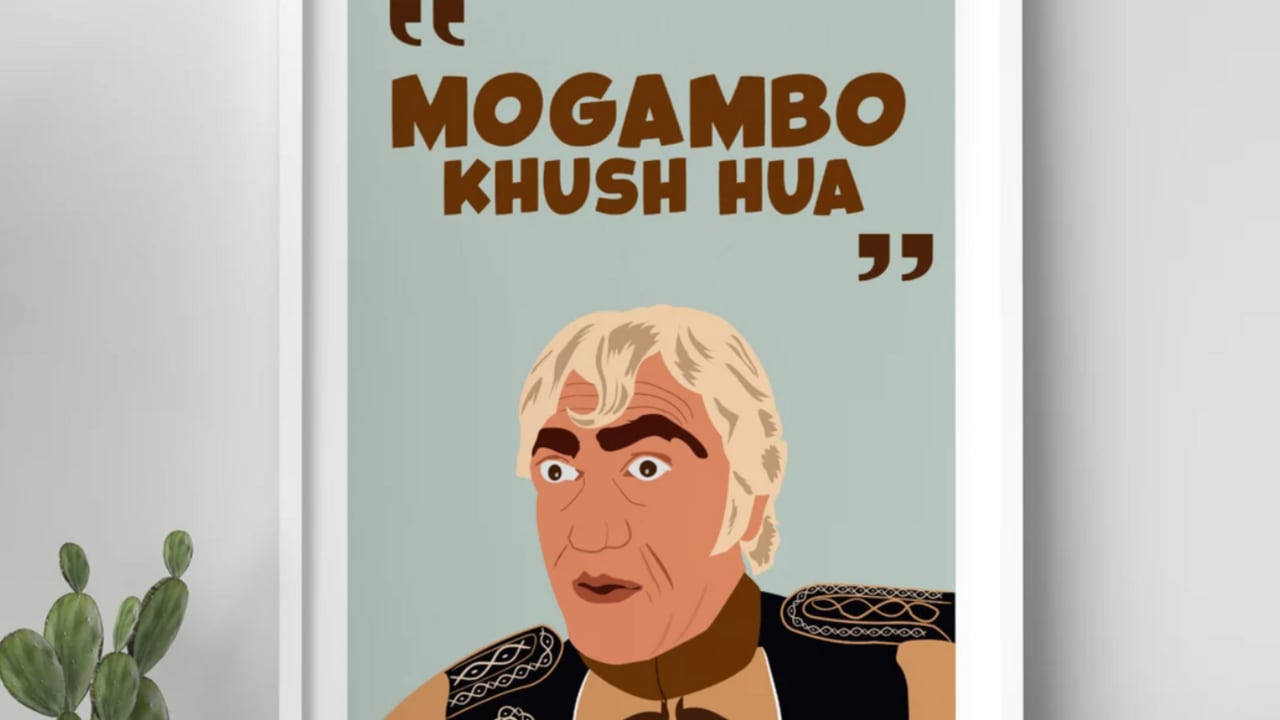How Bollywood Shapes the Way India Speaks


"Mogambo khush hua."
"How’s the josh?"
"Picture abhi baaki hai, mere dost."
In India, movie lines often take on a life beyond the screen. They slip into everyday conversations, shape inside jokes, and help people connect. Whether it’s a dramatic line from a 1980s action film or a catchy lyric from a chart-topping song, Bollywood has long helped shape how Indian audiences speak. Its influence continues to evolve alongside language.
As one of the world’s largest and most influential film industries, Bollywood plays an active role in shaping culture. Its films influence everyday speech, normalize language blending like Hinglish, and inspire catchphrases that endure beyond the closing credits.
Dialogues That Defined a Generation
Some Bollywood quotes are so iconic, they’ve transcended cinema and become everyday expressions.
- “Mogambo khush hua” (Mr. India, 1987) is now used to express exaggerated satisfaction.
- “Pushpa, I hate tears” (Amar Prem, 1972) is a dramatic, meme-worthy way to tell someone to stop crying.
- “How’s the josh?” (Uri: The Surgical Strike, 2019) became a rallying cry from cricket stadiums to corporate meetings.
These lines endure not only because of the words, but also because of delivery, timing, and how relatable the emotion is. Quoting film dialogues in casual conversation is common across generations and geographies. They’re used to break tension, inject humor, or show camaraderie, turning film fans into co-creators of cultural language.
The Rise of Bollywood Slang
Beyond quotable lines, Bollywood has helped popularize slang that people now use without a second thought. These expressions often start on screen but end up in everyday conversation, WhatsApp messages, and office banter. Here are just a few that have stuck:
- “Jhakaas” – Popularized by Anil Kapoor in Yudh (1985), meaning “awesome” or “cool”
- “Paisa vasool” – Literally “worth the money”; used to describe a good deal or satisfying experience
- “Patakha” – Slang for someone bold or striking, often heard in films with flirtatious tones
- “Item number” – Once used for glamorous dance sequences, now applied broadly to anything over-the-top
- “Tapori” – Street-smart, slang-heavy dialect made popular by Mumbai-based films
What’s remarkable is how these expressions travel. A slang word born in a Mumbai masala film might be casually used by someone in Chennai or Kolkata—even if they don’t speak Hindi—thanks to Bollywood’s massive national and global reach.
Bollywood and the Rise of Hinglish
India’s multilingual culture has led to the natural blending of English with regional languages, especially Hindi. Hinglish, a hybrid of Hindi and English, is not only widely spoken but heavily featured in Bollywood scripts and lyrics.
Lines like “Picture abhi baaki hai, mere dost” (“The movie isn’t over yet, my friend”) or “Yeh party to abhi shuru hui hai” (“This party’s just getting started”) reflect how seamlessly English words can fit into Hindi grammar (and vice versa). It mirrors how urban Indians actually speak, especially younger generations who switch between languages fluidly depending on setting or emotion.
Bollywood’s embrace of Hinglish has helped normalize it as a form of cultural expression that’s confident, playful, and uniquely Indian.
Pop Culture, Memes, and Global Reach
In the digital age, Bollywood’s influence on language has only grown. Quotes from movies are regularly turned into WhatsApp stickers, Instagram captions, and internet memes. A single line of dialogue can go viral overnight, expressing everything from political opinions to dating drama.
Music plays a big role, too. Tracks like “Why This Kolaveri Di” (2011) blended Tamil and English with catchy rhythm and went viral globally. Even international brands have jumped on the trend, using Bollywood-inspired phrases in marketing campaigns to appeal to Indian consumers.
These expressions live not only in spoken language but in GIFs, emojis, and memes, making them part of how people communicate visually and emotionally online.
Why It Matters: Language, Identity, and Localization
Beyond entertainment, movies shape how people express identity and emotion. In a diverse, multilingual country like India, film-inspired language offers a kind of shared vocabulary, a common reference point even when regional languages differ.
For companies trying to connect with Indian consumers, understanding these cultural expressions is critical. Literal translation won’t capture the warmth or wit of a phrase like “ekdum solid” or “scene on hai.” Effective communication requires cultural fluency and a working knowledge of the way language works in everyday use.
From Script to Street Talk
Bollywood is more than a movie-making machine. It's a language lab, a slang generator, and a mirror of how people express themselves in modern India.
As Bollywood continues to reach global audiences, its influence on language will only grow. From “jhakaas” to “josh,” screen-born expressions will keep finding their way into daily speech—because in India, the script is never really over.